I’m sure everyone knows by now that the 1940 US census was released this past Monday, 2 April. Many of us were eagerly awaiting that day but, as you probably also heard, things did not go as planned.
There were over 22.5 million hits on the NARA website within three hours as people tried to get a peek at the images. Most people, myself included, never got to view the 1940 census on the NARA website on Monday. Here is how the first part of this week went for me:
Monday, 7:25 a.m. Eastern Standard Time, I read on Facebook that Ancestry.com has a few 1940 census images available for viewing. Immediately I go to Ancestry.com, killing time until the National Archives releases the complete census at 9:00 a.m.
Ancestry’s list includes about ten US states and territories and Indiana is one of them. Yes! Indiana is one of the states I want to search.
The Ancestry website works smoothly and the images load quickly. The areas are broken down by state, then county, then township. It is easy to find a township and I do not even need the enumeration district numbers that I had looked up a few days before. However, the 1940 census is not yet indexed, so I browse through the names on each sheet of a particular township. That goes fairly quickly.
One of my goals is to locate where my three great-grandmothers were living in 1940. Pearl Brewster and her husband Philip lived on a farm in Jefferson Township, Adams County, at the time Philip passed away in 1935. I begin searching through the 18 sheets of Jefferson Township.
By 7:41 I see names that I recognize. Right there, on sheet 1, is Robert Dudgeon and his family. Robert’s name is on line 29, too! A person listed on line 29 answered supplemental questions. How lucky could I get? A relative that I remember on line 29 of sheet one! Robert’s wife Bernice was a daughter of Pearl Brewster. I must be getting close. I continue on.
I find what I am looking for on sheet 14, line 80. I am elated. My great-grandmother Pearl Brewster was living with her daughter and son-in-law, Arthur & Dorothy Weaver.
As I search through Jefferson Township I see the names of other relatives and acquaintances that I knew or have heard of. Some are still around today. Some of them:
Flora Caffee with granddaughter Betty Myers (ages 75 & 14)
Conrad & Emma Heffner (ages 73 & 67)
Harley & Ella Reef (ages 57 & 47) with daughters Naomi & Imogene (ages 23 & 21)
Ralph & Alpha Derrickson (ages 44 & 42) with children Ralph, Alvin, William (ages 15, 12 & 2)
Vic & Chloe Bollenbacher (ages 36 & 34) with children Althea & Olen (ages 9 & 4)
Theodore & Hazel Brewster (ages 38 & 32) with children Mary, Virginia, Jerry & Keith (ages 10, 5, 3, & 1)
At 8:59 a.m. I go over to the www.1940census.archives.gov website to see how their website works and to browse Mercer and Van Wert Counties in Ohio. Like most others trying to access the census on their website I get nowhere. Nothing is loading. I try off and on until noon and then give up. I would have to view my Ohio counties another day.
By now I need to get away from the madness and get some fresh air. It is a nice sunny day so I pack up my cameras and go over to Schumm Cemetery and take a photo of every tombstone there. It turns out to be a nice quiet, peaceful, tech-free afternoon.
Tuesday, 5:32 a.m.: The NARA website is now working well and I can view the census images. Ancestry.com now has Ohio! Too bad I have to go to work today. At lunch I browse Mercer and Van Wert Counties and locate my parents and my other two great-grandmothers. I note the pages and download them later that evening at home.
At 9:06 p.m. Tuesday I decide to try my hand at indexing the 1940 census. I read that some had already begun indexing Monday evening. Last week I downloaded the indexing program and read the indexing tutorial. Although I have never indexed before I am ready to give it a try. I download a census page from Kansas and I index the page in about ½ hour. This is fun! It is not difficult at all. And I feel good about helping index the census. I encourage others to try their hand at indexing so we will soon have it completed. Learn more about indexing the 1940 census at the 1940 US Census Community Project.
Several websites now have free access to the 1940 US census. These include Ancestry.com, MyHeritage.com, and Familysearch.org, and Archives.com, which has the complete set of 1940 census image from the NARA, www.1940census.archives.gov. The non-NARA websites may not currently have all of the images but will have them all soon. I have had the most success with Ancestry.com.
Here are the highlights of two households from Jefferson Township, Adams County, Indiana, 1940 US Census, from Ancestry.com:
Arthur Weaver household, sheet 7B, Stubes [?] Road, 136th house visited, line 76; Arthur, head, age 26; Dorothy, wife, 24; Myrna, daughter, 3; Arthur, son, 1; Pearl Brewster, mother, 58. Owned their home, value of $500, lived on a farm; highest level of education: Arthur H4, Dorothy H1, Pearl 8 [I assume H=high school]; they lived in the same house in 1935; Arthur worked 52 weeks in 1939 with an income of $1200.
The “x” by Dorothy’s name indicates that she gave the information to the census taker. She was the informant. The 1940 census also asked where the persons were living in 1935. This was to determine how much families moved during the Great Depression.
Robert Dudgeon household: sheet 1A, Boze [?] Road, 8th house visited, line 29; Robert Dudgeon, head, age 36; Bernice, wife, 32, Richard, son, 5; rented home w/monthly rent of $10; lived on a farm; highest level of education for Robert and Bernice was 8th grade; Robert’s supplemental questions: his father was born in Indiana; their mother tongue was English; he did not have a Social Security Number; usual occupation was farmer.
In Ohio, great-grandmother Christine (Rueck) Miller was living with the Reefs in Mercer County and great-grandmother Elizabeth (Schinnerer) Scaer was living with son Oscar Scaer in Van Wert County. My parents were on the farms they still own today.
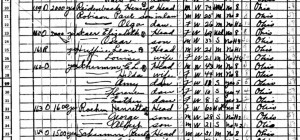
Elizabeth Scaer, line 23; CL Schumm family, line 27, 1940 US Census, Willshire Twp, Van Wert Co, Ohio, p 8A
My aunt Ruth was not in the Miller household. She was probably away at college.

Wavil Reef household, line 64, 1940 Census, Blackcreek Twp, Mercer Co, Ohio, p 8B. Christina Miller line 66.
Here are some statistics about the release of the 1940 census on 2 April 2012:
- There are 18 Terabytes of hosted data (1 Terabyte=1000 GB. The entire printed collection of the Library of Congress is approximately 10 Terabytes.)
- Day 1
- 22.5 million hits in the first 3 hours
- 100,000+ requests/minute during the day
- 25,000+ requests/minute during night
- 120+ x-large cloud servers
- 1,000 news articles written
- Day 2:
- 40.1 million hits during peak 3 hour period
- 200,000+ requests/minute during day
- 25,000+ requests/minute during night
- 180+ 4X-large cloud servers
- 250,000+ people spent 10+ min on site generating 4.2Million+ page views
Source: Archives.com, accessed 4 Apr 2012.
As you can see, I am not the only one interested in viewing the 1940 census!

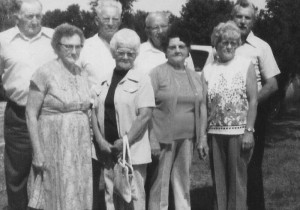

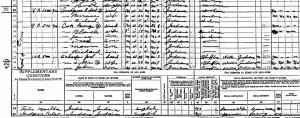

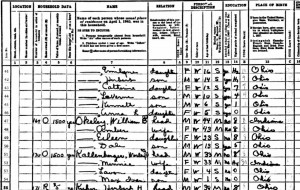
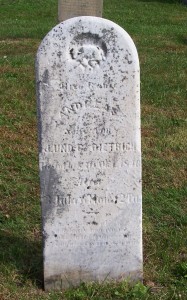
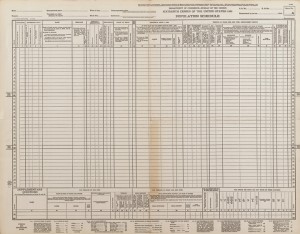
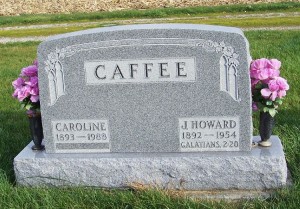
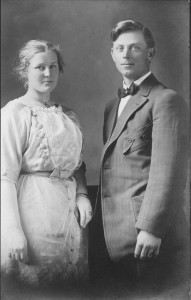
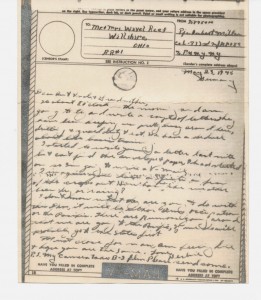
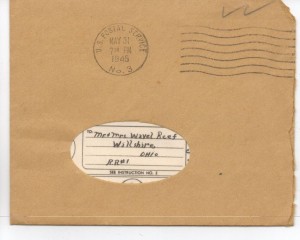


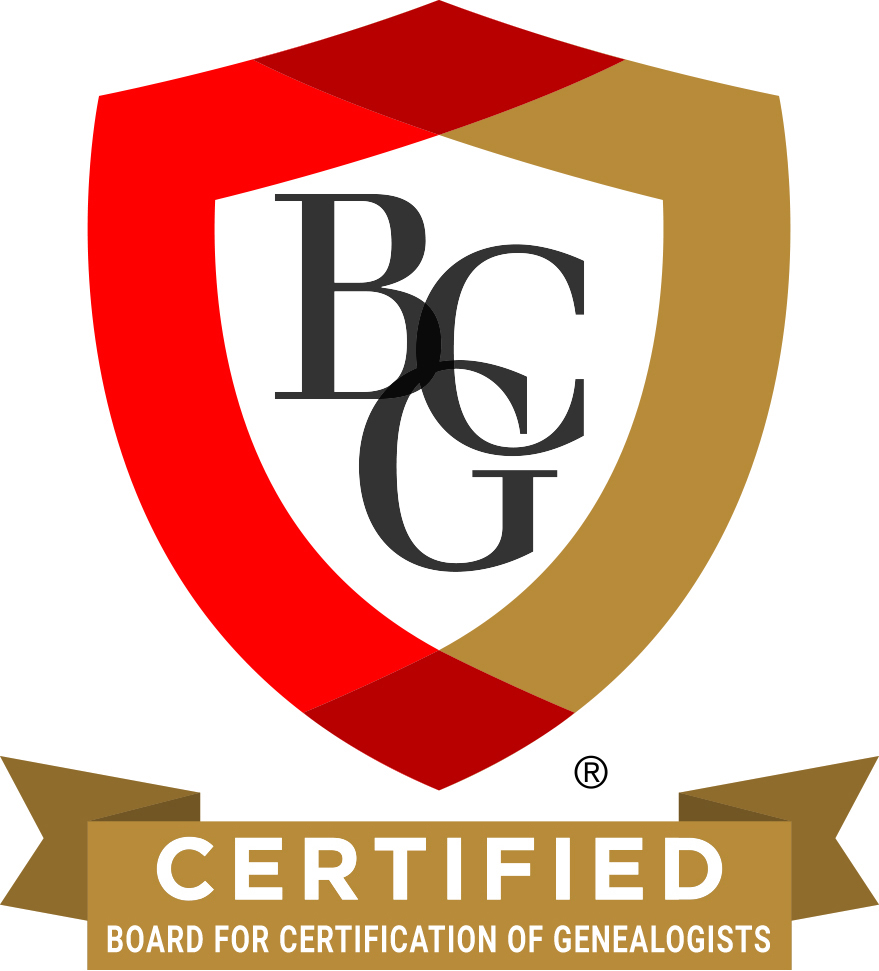
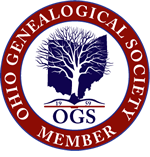

Thank you, Gloria. Great to hear from you and wishing you a nice spring and summer as well.
Thank you Karen. It was great to see them in their younger years. I always find your articles so interesting.…
What a story! I knew Henry Kissinger was in the 84th but have not corresponded with anyone connected to him.…
My father , Raymond Eugene Fairchild was also in the 84th infantry 333rd division Was in the Bulge and afterwards…
Very interesting. Thank you for that information. You are certainly the expert on early local history. We very much enjoyed…